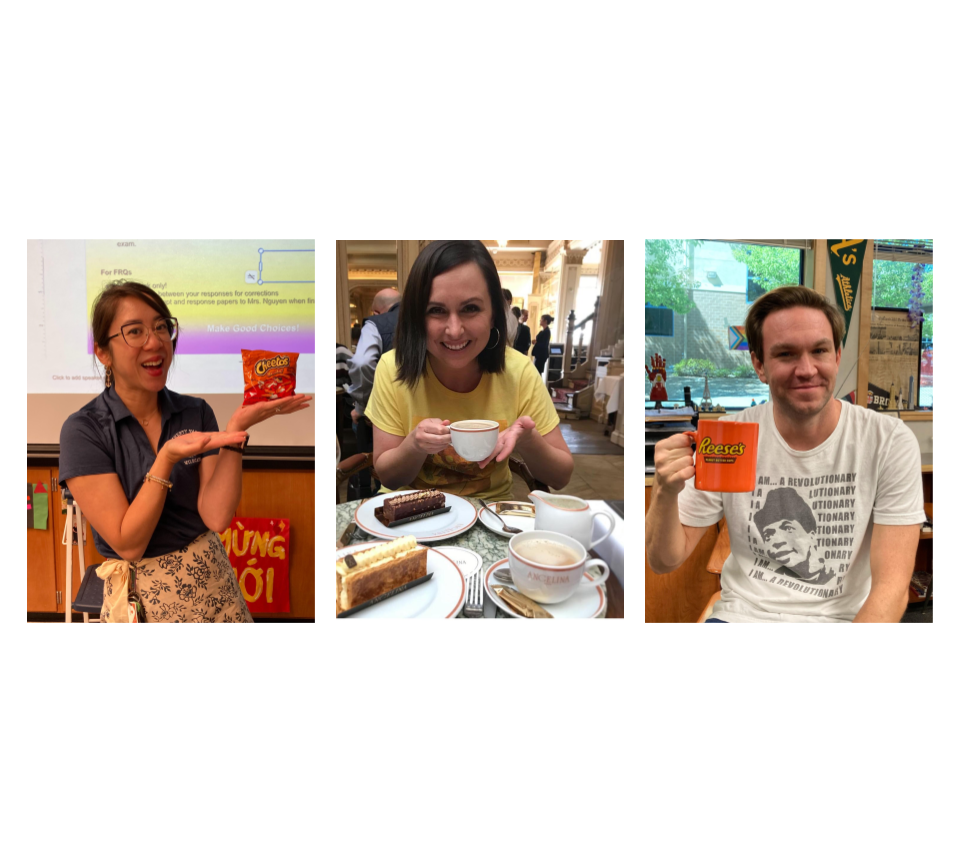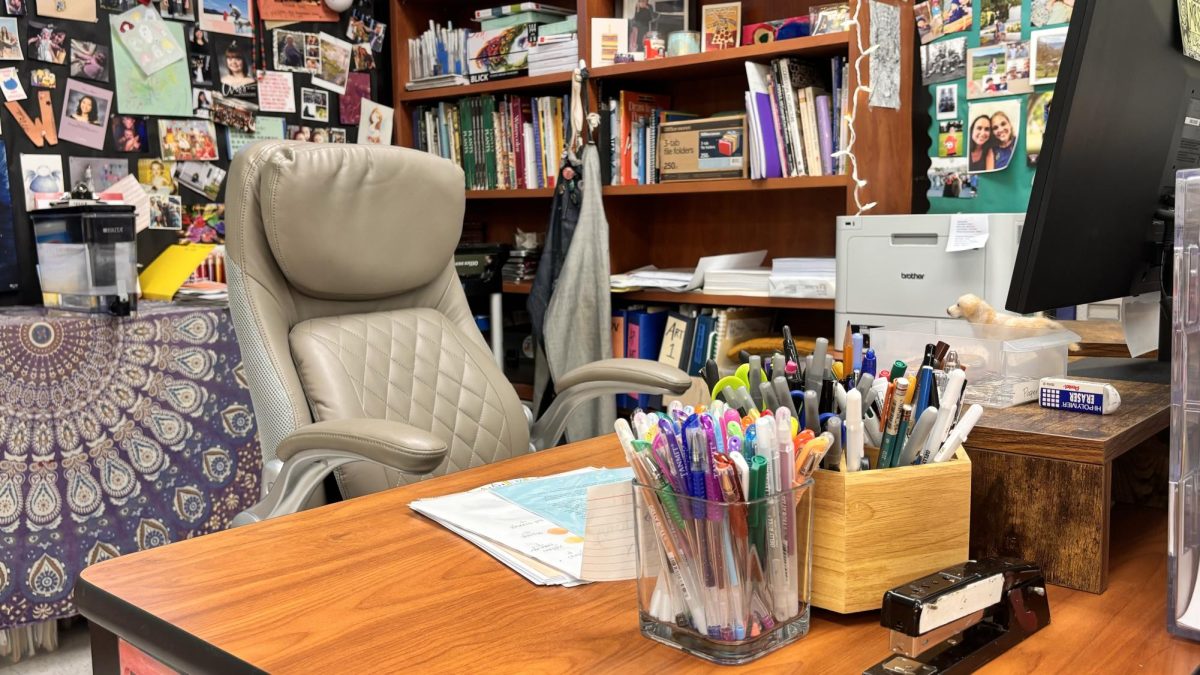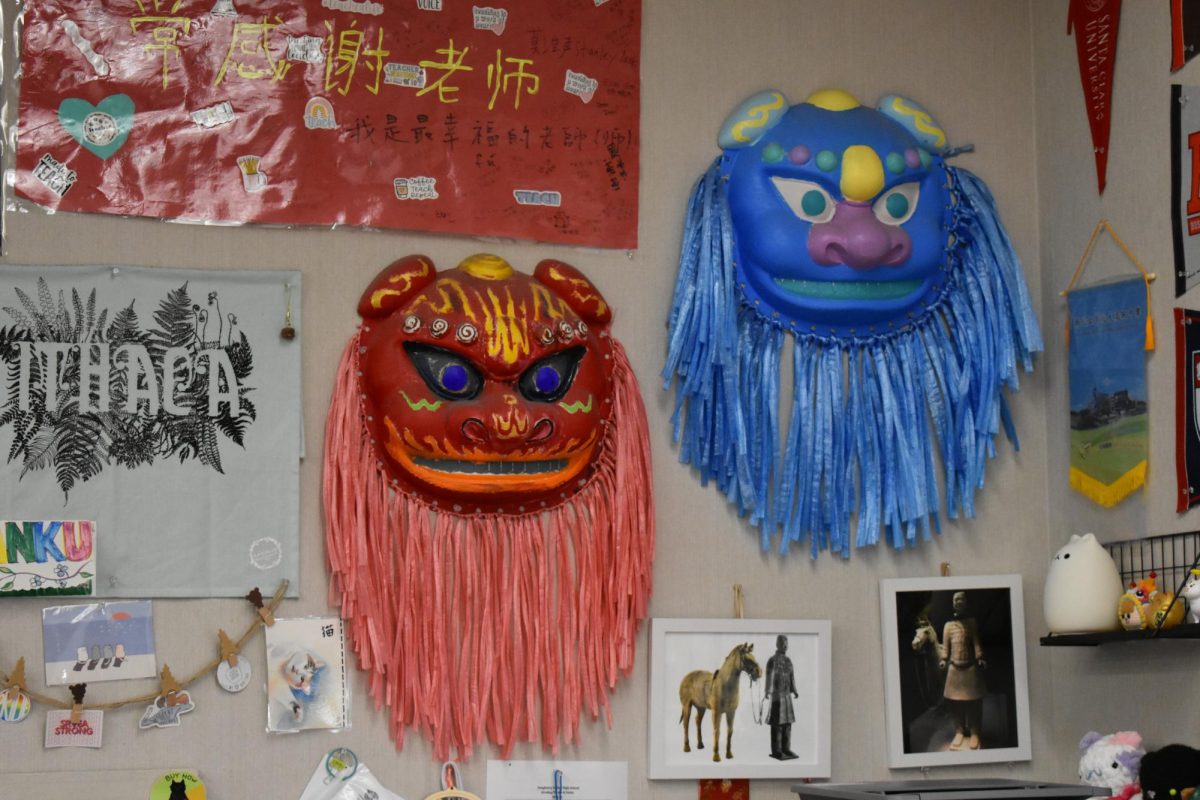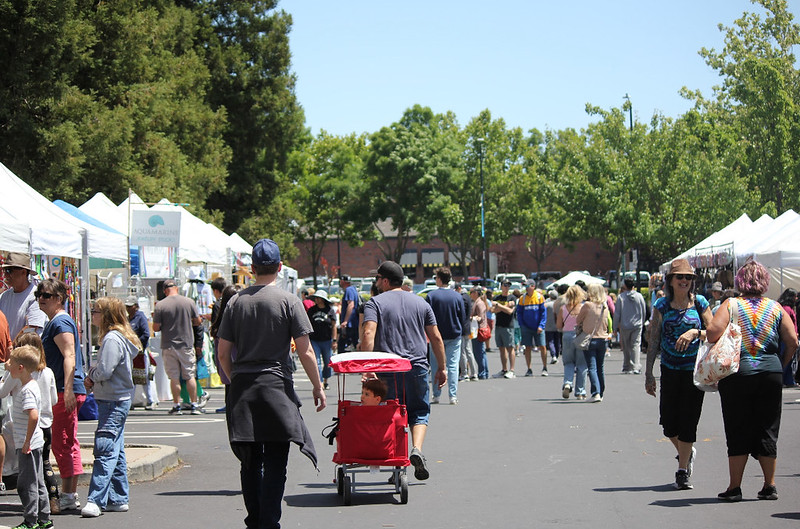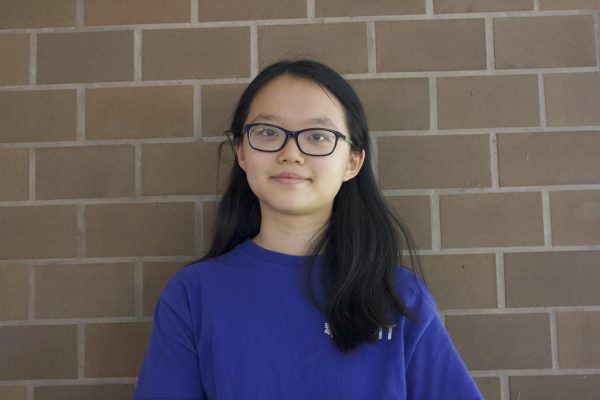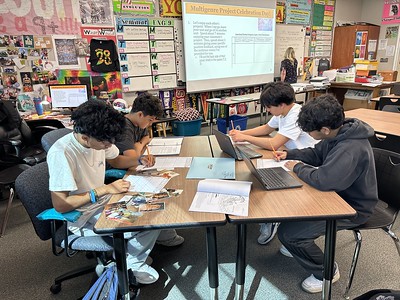
This school year, the Solutionary Academy program is being piloted at DVHS, a different pathway for freshmen that focuses on research and interdisciplinary learning.
Currently there are two cohorts of freshmen students in this program. Each cohort spends the first four periods together in English 9, Biology, Algebra II and either World Geography or Health. The teachers of these classes work together to make connections across their curricula, each incorporating content from other classes in their own teaching to create a more cohesive learning experience. Each semester, students work on a capstone project focused on identifying either a global or local problem and creating solutions based on the United Nations Sustainable Development Goals (UN SDGs), which teachers have also emphasized in their classes.
“In Mrs. Rai’s class in Bio, they [the students] spend an entire unit looking at wildfires: What are the causes of wildfires? What is the impact of wildfires on different communities that they affect? How has that affected local communities within California and even within San Ramon and the Bay Area? So they’ve already started, you know, identifying problems and consequences of those problems within our local community, related to those SDGs like climate change,” Drew Kravitz, the cohorts’ World Geography teacher, explained.
One unique feature of the program is that the cohorts’ teachers connect their lesson plans across classes—which is where the program’s original name, “Interdisciplinary Cohort,” came from. Kravitz recalled a unit on the Sahel that is traditionally explored in World Geography, but was extended to the other classes as well.
“We turned that [the Sahel unit] into a whole interdisciplinary unit where they started off by solving math problems in their Algebra II class related to the Sahel and desertification and the loss of vegetation in the region. Then when they came to my class, they explored the Sahel through a geographic lens and identified the human characteristics and physical characteristics of the region,” Kravitz said. “After they left my class, they went to English and they looked at the different perspectives, and they watched that documentary that went into all the different types of people that are affected by the various issues going on due to desertification and forced migration and things like that.”
While studying global issues in their classes, students form groups to research issues they’re interested in, putting together a capstone project about it each semester. Last semester, the students presented their projects in the library during the Solutionary Academy Fair.
“We did a Solutionary Academy Fair and we invited community members. We had it during school as well as after school in the evening. Families came, people from the district level came and then just other community members and teachers and students came during the day,” Jil Assefa, the cohorts’ Algebra II teacher, said. “Kids got to show off what they learned and their problem, and you could tell that they were super excited and passionate about the projects that they chose.”
Several students in the program mentioned this fair when asked about a memorable experience in the Solutionary Academy program. Shirley Huang, whose project was on maternal health care, described a sense of pride when presenting it at the fair. Gaurav Vedula remembered creating a documentary as a supplement to his project on California’s fentanyl crisis, which he enjoyed sharing with others.
“It was a fun experience getting to present our projects to people, like those up in the Board,” Vedula said. “Talking to people that we haven’t talked to before, it gets us outside of our comfort zone.”
While the capstone projects during the first semester were focused on global issues, second semester projects will focus on local issues and students’ own solutions to them.
“We’re saying anywhere within the state of California; ideally, we want them to narrow it down to a specific region, if not a city or town, and they also need to come up with a solution, an action that can be implemented,” Kravitz elaborated.
The effort to bring the Solutionary Academy to DVHS was spearheaded by Doron Markus, a Coordinator on the Curriculum and Instruction Team at the district office.
“Last year, I took a trip to Arizona to see schools that have a similar model to this. We’ve taken this to a completely different degree, but they had something that inspired us to think bigger about what the possibilities here in San Ramon Valley could be,” Markus explained. “I’ve brought years of my own experience to this and helped design what this program looks like. I helped train the teachers that are involved in this and brought a philosophy to the program which is what everybody’s working on right now.”
Markus highlighted that the interdisciplinary nature of the program is an important reflection of what students’ careers will look like later down the road, and as such helps prepare students for life after school.
“Our program is interdisciplinary, which means our teachers collaborate and design cross-curricular lessons. The math teacher works with the English teacher and the science teacher works with the English teacher. [This aspect] really kind of reflects what our world is really about, because our world is not about specific things happening in silos; everything is connected to everything else. Our program really highlights the connections between different topics to help our students understand the way the world works [and prepares them for] when they enter the workforce,” Markus said.
In future years, Markus hopes to extend the Solutionary Academy to more schools and students.
“The greater vision is that all four of our comprehensive high schools in the district will be implementing a freshman cohort at some point. So that is going to happen next year at Monte Vista High School. They are right now gathering the teachers that would be part of this cohort,” Markus said. “The really greater vision is, 10 years down the line or something, all entering freshmen are in a cohort across all of the district. So not pockets of things at different high schools, but that is the model that this district uses. If you are a freshman in this district, you are immediately cohorted with other students as a freshman. That’s our goal.”
This year, freshmen were selected into the cohort program at random if they had English 9, Algebra II, Biology, World Geography and Health on their schedules. However, the Solutionary Academy team is currently doing outreach to students in the middle schools feeding into DVHS; the hope is that the cohorts for next year will be comprised of students who volunteer to take part in the program.
As for who should be applying for the program in future years, “Students who ask the question, ‘Why is school meaningful? Why do I have to know this? How is this connected to anything in the real world or how is this connected to anything in my other classes? Everything seems so isolated, everything seems boring. I’m not really doing anything meaningful. Like the world is like the world’s on fire and we’re not talking about the fire.’ Those kids are the kids that should be coming into this program, because that’s exactly what we’re addressing here: how to get more engaged, how to connect what they’re doing to the real world, how to connect what they’re learning from one class or another class,” Markus said.
Adinath Ajan, another Solutionary Academy student, gave his take on pros and cons of the program, which may be helpful for students who are considering applying.
“I don’t think there are many cons, but if I had to choose one, it might be that we do things differently than other classes, so I couldn’t ask them for help,” he said. “But there’s more pros, like being able to work with peers and no finals.”
Although there were many challenges along the way, such as funding (which Markus’ team was eventually able to secure from the San Ramon Valley Education Foundation) and collaborating across different departments and disciplines, Markus stated that the pilot program has exceeded his original plans.
“I’m so proud of the teachers for a hundred different reasons. I’m so proud of the work they’re doing,” he said. “The kids have [also] stepped up. I’m so proud of them. Every time I talk to them, I’m just like, ‘You guys are incredible. I can’t believe how much you’re stepping up, how much you care about these topics.’ I couldn’t be more honored and proud to be part of this program because of the direction that it’s gone and [how it’s] surpassed expectations.”

